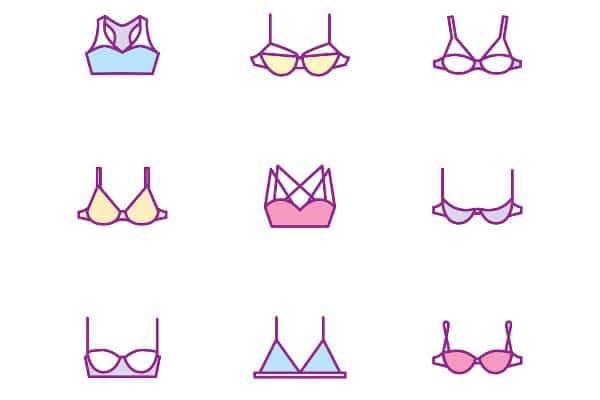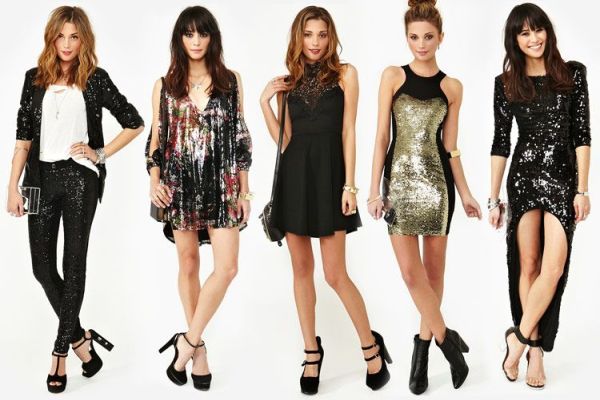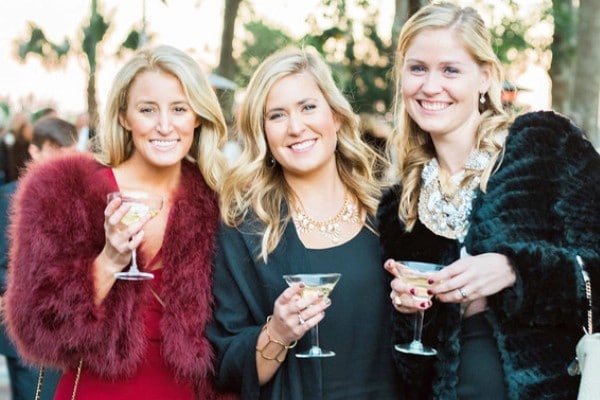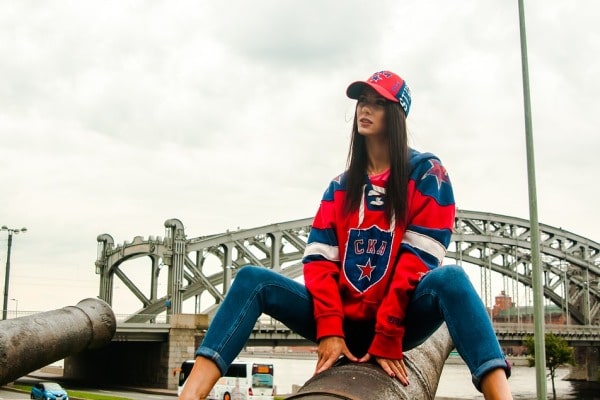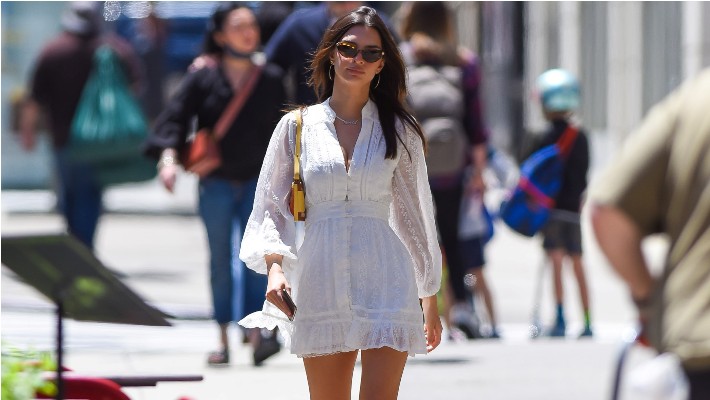Bra Styles Pros and Cons – Choose The Right One
Bra Styles Pros and Cons – There’s One That’s Right For You Bras are highly engineered and thoughtfully designed undergarments. They generally take many months to design and fit modify before being…
Bra Styles Pros and Cons – There’s One That’s Right For You
Bras are highly engineered and thoughtfully designed undergarments. They generally take many months to design and fit modify before being put on the market. It is not unusual for a bra design to include as many as 40 fabric, trim, and hardware pieces.
Though many bras are beautiful, they are more about playing a supportive role in your clothing. Knowing what bra designs work best for your figure and bra size will help you more easily identify the bras styles that best suit your needs. Not all bras styles work on every woman. We’ve therefore compiled this list of bra styles, and have included remarks as to each style’s pros and cons.
Bras styles can also have differing cup designs. After our list of Styles, we have a list of bra cup styles. Cup styles are also an important consideration when selecting a bra.
RELATED: The Best Shapewear for Every Body Type
The Bra Styles Pros and Cons
There’s a Bras Style That’s Right For You
3-part/Multi-part cup bras

These bras have 2 or more fabric pieces, sewn together with seams, making up their cup design. By far, seamed cup bras are the most supportive bra style you can have. The seams are there for a reason, not just design. They help shape and provide contour to your breasts.
Good style for:
- Full breasts, pendulous breasts, heavy breasts.
- Creating more traditional shaping for splayed breasts.
Not so good for:
- Smaller cup sizes since the seaming that provides breast support are not really needed.
Hands down, the multi-part cup bra is the most supportive bra style made. It can also be the most attractive because all lace bras must have seaming in their cups in order for the lace to lay properly. The other advantage to a seamed cup bra is that it gives your breasts a beautiful shape and centers your breast tissue.
You can have a 2-part cup, a 3-part cup, and even a 4-part cup. Most 3 and 4 part cups almost all have a vertical side panel on the outside of the cups. This vertical panel helps pull breast tissue out from under your arms and keeps it front and center, giving you a thinner and more youthful silhouette. If you are a D cup or larger, you should seriously look at multi-part cup bras. They will give you great support and a great flattering figure.
Bra Styles Pros and Cons – Adhesive bras

The cups have surgical-quality re-usable adhesive along their insides.
Good style for:
- When you need some breast coverage and no other bra style works.
- The ones with added silicone give an additional size to your breasts.
- Hiding erect nipples.
Not so good for:
- Those needing breast support.
Basically, adhesive bras are bra cups with surgical-quality re-usable adhesive on the inside of the cups – the bra can be peeled off and worn several times. They don’t give much support – but they give shaping and better yet, hide your nipples under sheer clothing. Some even come with significant silicone to give additional depth to your breasts. When you find yourself wanting to wear an outfit and no bra seems to work, an adhesive bra can come to the rescue and save the day or evening.
Bra Style Pros and Cons – Bralettes

Bralettes – Unlined wireless bras without closures so require that you pull them over your head.
Good style for:
- Leisure and sleeping.
- Women not wanting much support.
- Teens and petite women.
Not so good for:
- Women wanting support and breast definition.
- Large-breasted women.
This name is given to an unlined wireless bra that usually pulls over your head. It is more of a leisure bra or a bra for a woman not wanting much support. This bra style is best for small-busted women or for some support while sleeping or for leisure.
Convertible Bras

The straps either come off or are detachable on one end so that you can configure your straps according to your top. For example, a convertible strap can be one-shoulder, crisscrossed in back, halter, kicked in, and strapless.
Good style for:
- Wearing under unusual/asymmetrical tops.
- A great travel bra because of its versatility.
Not so good for:
- Those prefer comfort straps or wide straps since this bra style primarily comes with only thin removable straps.
- Those with heavy or large breasts will find they lack some support and have uncomfortable straps.
A convertible bra describes any bra with some form of detachable straps. These detachable straps can either crisscross, one shoulder, halter, kick in, or be removed completely to become strapless. A great choice if you are traveling and want to take only one bra with you.
Corset/Bustier style bras

Generally, a longline strapless bra where the bra band can be cinched in by laces or multiple rows of hooks & eyes. The cups are usually demi cups styled to show off your upper breast tissue.
Good style for:
- A strapless solution for full and/or large breasts.
- Creating mounding and cleavage.
- Women looking for back support.
Not so good for:
- Wide-set breasts, since it will probably not create a vertical cleavage line.
- Short-waisted women could find the garment too long for their torsos.
- For women with a tummy larger than the band size; this garment won’t fit properly – even in larger band size.
Corsets and bustiers are very structured and form-fitting undergarments extending from the baseline down to the waist or hips. These garments can have boning, garters, removable straps, and lavish embellishments. It is not unusual to wear these garments as outerwear. Most close down the back in a long row of hooks and eyes or lacing.
Demi Bras

Demi Bras – The cups have shorter underwires, less upper-breast coverage, and wide-set straps.
Good style for:
- Settling breasts and shallow breasts will probably get some mounding.
- Petite women with large breasts will enjoy shorter underwires and reduced cup coverage.
- Shorter wires up the center make this style a good choice for women with symmastia.
Not so good for:
- Pendulous breasts will probably not look attractive in this style.
- Omega-shaped breasts have too much breast tissue for this bra style.
- Women looking for the same support that a full-cup bra gives.
- Large areolas could show along the top bra line.
- Women with sloping shoulders will have strap slippage issues.
Front Closure Bras
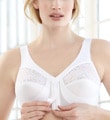
Front Closure Bras – Bras where the closure is in front instead of the back.
Good style for:
- Women with limited hand movement, or who cannot get their hands behind their backs.
- No hook/eye bumps make for a smooth looking back.
- Wide-set breasts will find that most of these bras have wider-set cups.
Not so good for:
- With no adjustability, women between band sizes or with band size fluctuations will have difficulty getting a proper fit.
- Women need a supportive and anchored center panel.
- The life of the bra is less due to the band not being able to adjust.
Front-closure bras are popular with many women because they’re easy to put on and take off. However, if you’ve been shopping for one recently, you’ve discovered there are very few to be found, and for good reason. Front closure bras can be limiting since by definition they have only one non-adjusting clasp at the center front. The bra must fit perfectly because it cannot be adjusted. The center front clasp is not as strong or as supportive as a bra with a center panel. Consequently, the bra cups can shift around thus reducing support. Finally, a front closure bra will not last as long because of its inability to adjust tighter.
Long-line Bras

Longline Bras – Have bra bands that extend down to the waist or lower.
Good style for:
- Adding distributed breasts and thus reducing stress on shoulders and back.
- Relief of back pain and additional discomfort when standing for long periods.
- Combination bra and shapewear all-in-one.
- Eliminating bumps from the underbust down.
Not so good for:
- Short-waisted women could find the garment too long for their torsos.
- Pear and tomato-shaped bodies will have fit issues – hips will be too tight, or the tummy will be larger than the band size. One option is to go up a band size and down a cup size to get a more generous fit around the torso.
Long-line bras are a fabulous style that seems to have been forgotten by most women. All women should have a long-line style bra in their lingerie wardrobe. Here’s a list of reasons why:
- Smooth lines – a long line virtually eliminates bumps from the neck down
- Better support – A long line distributes the support over a greater amount of your upper body, thus reducing stress to any one area like the shoulders or back.
- Clothes fit better – A long line can reduce you enough around your torso to possibly go down a blouse size.
- Focused support – The design of a long-line allows for focused support in specific areas such as your tummy, lower back, and shoulder blades
- Feel better – A long line makes you look better in your clothes, thus making you feel better about how you look. Women who stand or sit all day wearing long-line bras report a significant reduction in their back pain and shoulder stress. Though this has not been studied, it’s another benefit to consider.
Minimizer Bras

Designed to reduce the projection of your breasts.
Good style for:
- Button-down blouses will not have that pulled apart to look.
- Reducing forward breast projection in fuller figures.
- Full-busted wide-set breasts will get kissing cleavage.
- Pendulous breasts and breasts with a non-traditional under-bust crease.
Not so good for:
- Enhancing breast projection.
- Cup sizes larger than a G are not made in this style.
- For those who perspire heavily – the breast tissue is moved towards the under-arm.
- Short-waisted women could find their breast tissue is too high up around their neck.
Minimizer bras are designed to reduce the projection of the breasts. Large breasted women like a minimizer because they feel it makes them look smaller in the chest and allows them to wear button-front blouses without that pulling look. However, the minimize bra style mostly goes up to G cup sizes.
A minimizer does not reduce the size of your breasts. Rather, it minimizes your breasts’ projection. Instead of pointed breasts, a minimizer bra changes the breast shape to a more firmly held mound. The cup shape is designed with a wider diameter and a shorter projection. Your malleable breast tissue is flattened and moved more under your arms, towards your center cleavage, up your chest, and down towards your waist. Some minimizers push your breast tissue more in one of these directions than others.
Padded Bra Styles

Padding is added to the inside of the cups to give the definition, add size, and eliminate nipple definition. The padding can be light, medium, or heavy. Its location can be built-up along the bottom of the cup, along the sides of the cup, or evenly around the insides of a cup.
Good style for:
- Small cup-sizes are desirous of a larger profile.
- Uneven breasts – especially if there are removable pads.
Not so good for:
- Keeping breasts at their natural volume.
- Those who perspire heavily will find that the padding doesn’t breathe – unless the padding is spacer foam or specifically says “breathable” in our description.
Any bra with some kind of padding in the cups is called a padded bra. Padding added to a bra gives definition, can add size, and eliminates any nipple definition. A padded bra can have light, medium, or heavy padding, but can also have built-up padded areas at the bottom and/or along the sides of a cup. These pads are referred to as bump pads. Padded bras with removable pads called “cookies” can be a great solution for a woman who has one breast larger than the other. The padding can be fiberfill or a molded foam.
Petite Bra Styles
Bras specifically designed for a woman with a petite frame. The cups are closer together and pared-down, the straps are shorter, and the underwires are not as long.
Good style for:
- Short, small-framed women.
- Pre-teens and teens.
Not so good for:
- Regular-sized women.
- Wide-set breasts could find the shorter underwires and closer cups uncomfortable under their arms.
Plunge Bras
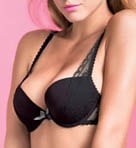
A bra with a low center panel to allow for plunging necklines.
Good style for:
- Someone wanting the appearance of more cleavage.
- Looking for a bra that doesn’t show under plunging or button-down necklines.
- Wanting cleavage without padding.
Not so good for:
- Cup sizes smaller than a C cup.
- Woman needing padding to create cleavage
- Leaning forward too far could cause your breast to fall out of the bra.
- Settled breasts, deflated breasts, shallow upper breasts, and pendulous breasts.
Push-up Bra Styles
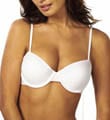
The cups have various pads to push your breasts up and inward to optimize cleavage and breast size. Straps are usually wide-set.
Good style for:
- Shallow (but supporting) breasts and semi-supporting breasts.
- Creating a more youthful and/or sexy appearance under strapless dresses or low cut tops
- Smaller breast sizes wanting to look larger and fuller.
Not so good for:
- Pendulous breasts or deflated breasts – these breasts won’t mound enough.
- Uneven breasts will need to add an additional pad to even out the smaller side.
- AA and A cup women will probably not see much benefit.
- Wide-set breasts will not get kissing cleavage.
- Women with strap slippage issues.
A push-up bra is great to give the illusion of larger breast size. The padding, if removable, is known as a “cookie”. Push-up bras are padded bras with additional padding at the bottom portion of the cup to lift the breasts, creating the illusion of a larger breast. Most push-up bras come in C cups or smaller and have wide-set straps.
New push-up designs also have padding along the bottom and along the outside edges of the cups. This style of push-up bra not only lifts the breasts but also pushes them together to help optimize the possibility for a cleavage line. However, wide-set breasts and B cup size breasts and smaller ones will probably never achieve a touching cleavage line – there just isn’t enough breast tissue to push around to achieve this.
Racerback Bras
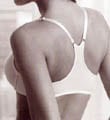
Also called “T-back” and “sports back” bras. This bra back design allows for maximum movement of the back and arms without any strap slippage.
Good style for:
- A great solution for sloping shoulders and/or narrow shoulders.
- Creating cleavage if the racerback is also underwire.
- Easing back pain for those who find traditional straps painful
- Hiding straps in sleeveless and cut-away tops.
Not so good for:
- Women with sensitive neck tendons.
- This back design can be visible under some tops.
Racerback bras are also called T-back and Sportback bras. A racer-back bra is any design for the back that allows maximum movement of the back and arms. An added advantage is that such a design hides straps under sleeveless and tank-style tops. A racerback bra can have a high curve near the neckline with a T-strap down the center back; have bra straps attached close together on a back with a center back panel. Or have cut-outs around the shoulder blades.
Because of the back design, a racer-back bra will most commonly be front closure. It, therefore, has all the front closure challenges mentioned above. The strap placement may also be too close to your neck, pushing down on your cervical nerve, which runs from your neck to your shoulders. Therefore, headaches, neck pain, numbness, and shoulder pain are frequent complaints by women who have tried racer-back bras.
Seamless (molded) Bras
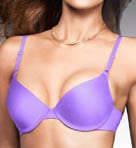
The cups are of a single piece of fabric without seams that have been molded and shaped over a pre-determined breast form.
Good style for:
- Not adding any additional fullness to breasts.
- Breasts that are self-supporting or and therefore do not need a lot of breast support.
- Smooth and natural look under form-fitting tops.
Not so good for:
- Uneven breasts unless the cups are stretchy, erect nipples, and thin breasts.
- Deflated and/or pendulous breasts will look unattractive due to a lack of adequate support.
Seamless bras are one of the most popular style bras sold in the US. They give a natural round look to your breasts without any seams showing. If you like wearing clingy knits or form-fitting clothing, a seamless bra will be almost invisible underneath.
Shelf Bra Styles
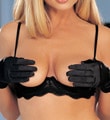
Shelf Bras – A bra with an underwire but a very small lower cup that does not cover the nipple.
Good style for:
- Firm and self-supporting breasts.
- Breast sizes smaller than a D cup.
- Looking braless while having some support.
Not so good for:
- Settling and pendulous breasts.
- Large breasts need support.
A shelf bra is a bra with an underwire and a very small cup that does not cover the nipple. This bra style can also be called a “chopper bra.” Apart from being extremely titillating to men, smaller-breasted women can wear shelf bras in place of a bra if they want a “natural” look, but without the sagging. If you want to go braless, but secretly wish you had some support, a shelf bra is an answer.
A shelf bra is also the name given to an additional piece of fabric with elastic sewn along the lower edge that is then sewn inside a top for additional breast support. This added fabric acts as a sling to give your breasts added support.
Soft-Cup/Wireless/Wire-Free Bras

Bras without underwires.
Good style for:
- Wide-set breasts, splayed breasts, non-traditional under-bust crease, and pendulous breasts.
- Providing full breast coverage.
Not so good for:
- Adding definition to the bustline.
- Creating push-ups or cleavage.
- Those who prefer the center panel to lay flat against their sternum.
- Plunge blouse styles.
For a comparison between wire-free and underwire bras, please see below under “Underwire Bras.”
Sports Bras

Sports bras are specially designed bras to minimize breast movement during exercise.
Good style for:
- Specially designed bra to minimize breast movement during exercise. They come in a variety of impact levels.
- Any woman wanting support during any exercise activity.
- Great coverage and support
- Minimizing breast bounce
Not so good for:
- Every day wear.
- Woman wanting to add size or padding
Sports bras are specially designed bras to minimize breast movement during exercise. A sports bra minimizes breast bouncing. Its design includes wider straps and broad cup coverage. Breasts are supported by the non-elastic Cooper’s ligaments. Frequent exercising breaks down the ligaments and causes permanent sagging in your breasts if not contained from movement. Wearing a sports bra will help prevent damage to the breast tissue. Manufacturers often categorize their sports bra line by the level of impact and exercise intensity. If you participate in various sports or exercise activities, you may need several different sports bras. Sports bras are designed using one of three engineering concepts:
- The compression bra works like the old Ace bandage by compressing the breasts against the chest (giving a woman what some call a “uni-boob”). This design works well for A- and B-cup women and its tank or t-shape design allows many women to work out sans T-shirts without embarrassment.
- The other concept is to encapsulate each breast. This style of sports bra tends to look more like a traditional bra with full cup coverage. Wide straps, clasps, and in some cases, underwires keep the breasts in place.
- Compression/encapsulation sports bra uses the two technologies together for optimal breast stability. This combination is becoming more and more popular.
Strapless Bra Styles

A bra without straps. Many convertible bras can also be strapless bras.
Good style for:
- Strapless tops and dresses.
- Firm and self-supporting breasts.
- Breast sizes smaller than a G cup.
- Necklines where another bra style won’t work.
Not so good for:
- Breasts larger than a G cup needing significant support – longline and bustier bras are a better choice.
- Raising your arms up and down frequently.
Of all bra styles, strapless bras are the most technically challenging to design. Without straps, this bra style must rely completely on the strength of the fabric, the design of the band, and the shape of the underwires to stay in place and provide support. A strapless bra without underwires is a bandeau and has much less support.
The most successful strapless bras have a wideband; boning under the arms and at the center front; deep underwires; gripper-like silicone strips along the inside to reduce slippage; and special elastic with exposed small elastic loops to help grip. Some strapless bras also put boning in the cups. Such boning gives additional support to larger breasts.
Strapless underwires are different from other underwires. Not only are their wires taller, but they also curve in to encompass the breast more than a normal underwire. When the underwires splay, they actually encircle the breast giving better support as well as reduced slippage.
Even with all this technology and sophisticated design, a strapless bra can be a little uncomfortable and need to be pulled up throughout the evening if the wearer is active and large breasted. A strapless longline bra should thus be considered.
T-Shirt Bra Styles
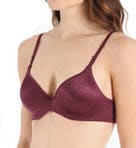
T-Shirt bras, also called contour bras, have a molded seamless cup with a layer of foam for shape and modesty.
Good style for:
- Camouflaging erect nipples.
- Uneven breasts, shallow breasts, thin breasts, or conical breasts.
Not so good for:
- Large full-breasted women could have support issues.
- Heavy breasts can negatively impact the shape of the cups.
- Shallow, thin, and conical breasts will need a more rigid foam cup that holds its shape.
- Uneven breasts might need an additional pad inserted under the smaller breast to ensure an even look.
The T-shirt bra is actually a name given to what the industry calls a contour cup bra. This bra is a combination of being a seamless bra and a lightly padded bra. There is a thin layer of foam or padding in the cups to give a nice shape and modesty so that the contour of your nipple does not show. The public started calling them T-shirt bras because they are the perfect invisible solution to wear under t-shirts and other clingy or form-fitting clothes.
The contour bra is the best-selling bra style in America. However, it does have limitations in the larger cup sizes. When breasts get too large and/or too heavy, this breaks down the pre-formed breast shape in the bra’s cups and you can end up with a less-than-flattering bustline.
Underwire Bra Styles
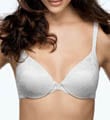
Bras with underwire for breast support and definition
Good style for:
- Almost everyone will benefit from a well-fitting underwire bra. It gives a great definition of the bustline.
Not so good for:
- Wide-set breasts may find the underwires painful unless the center panel is also wide.
- A non-traditional underbust crease will have fit issues.
- Omega-shaped breasts will find the underwires resting lower on the chest and therefore possibly painful.
- Splayed breasts will need to find the right center panel in order to feel comfortable.
- Distended high tummy and prominent breast bone chests may find the wires in the center tipping out and away from their chest.
- Anyone with sensitivities to metal.
- Prominent ribs will find wires painful
Petite Bras

Bras specifically designed for a woman with a petite frame. The cups are closer together and pared-down, the straps are shorter, and the underwires are not as long.
Good style for:
- Short, small-framed women.
- Pre-teens – but the girl must have at least a B cup.
Not so good for:
- Regular-sized women.
- Wide-set breasts could find the shorter underwires and closer cups uncomfortable under their arms.
What’s your favorite bra style? Are you ready to try a new one?
